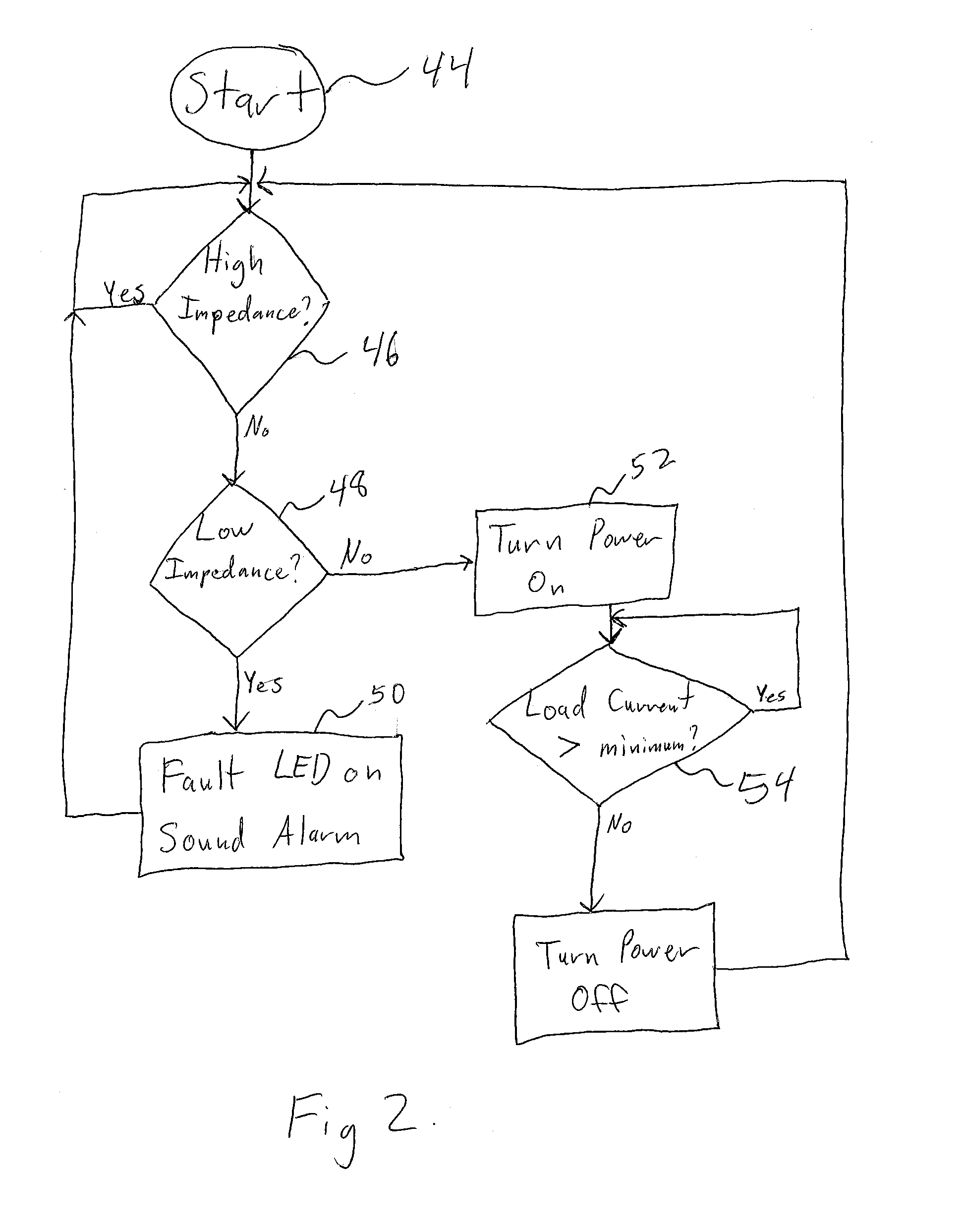Electrical Safety Outlet
a safety outlet and outlet technology, applied in the field of electric outlets, can solve the problems of at dockside, affecting the safety of people on construction sites, and presenting significant electric shock hazards at power outlets, etc., and achieve the effect of enhancing safety
- Summary
- Abstract
- Description
- Claims
- Application Information
AI Technical Summary
Benefits of technology
Problems solved by technology
Method used
Image
Examples
Embodiment Construction
[0037] Referring now to the Figures, a description of the embodiments of the present invention will be given. It is expected that the present invention may take many other forms and shapes, hence the following disclosure is intended to be illustrative and not limiting, and the scope of the invention should be determined by reference to the appended claims.
[0038] Embodiments of the safety outlet reduce the above-discussed hazards by ensuring safety before supplying line power to the receptacle. For example, unlike the outlet described in U.S. Pat. No. 6,552,888 to Weinberger, embodiments of the invention use safe low-voltage DC power to check and ensure that an appliance is plugged into the safety outlet, that the appliance does not have short circuits or ground faults, and that the appliance is switched on. For example, where Weinberger's outlet will not detect ground faults without the power turned on (and with the power turned on, ground faults are only detected in Weinberger's o...
PUM
 Login to View More
Login to View More Abstract
Description
Claims
Application Information
 Login to View More
Login to View More - R&D
- Intellectual Property
- Life Sciences
- Materials
- Tech Scout
- Unparalleled Data Quality
- Higher Quality Content
- 60% Fewer Hallucinations
Browse by: Latest US Patents, China's latest patents, Technical Efficacy Thesaurus, Application Domain, Technology Topic, Popular Technical Reports.
© 2025 PatSnap. All rights reserved.Legal|Privacy policy|Modern Slavery Act Transparency Statement|Sitemap|About US| Contact US: help@patsnap.com



